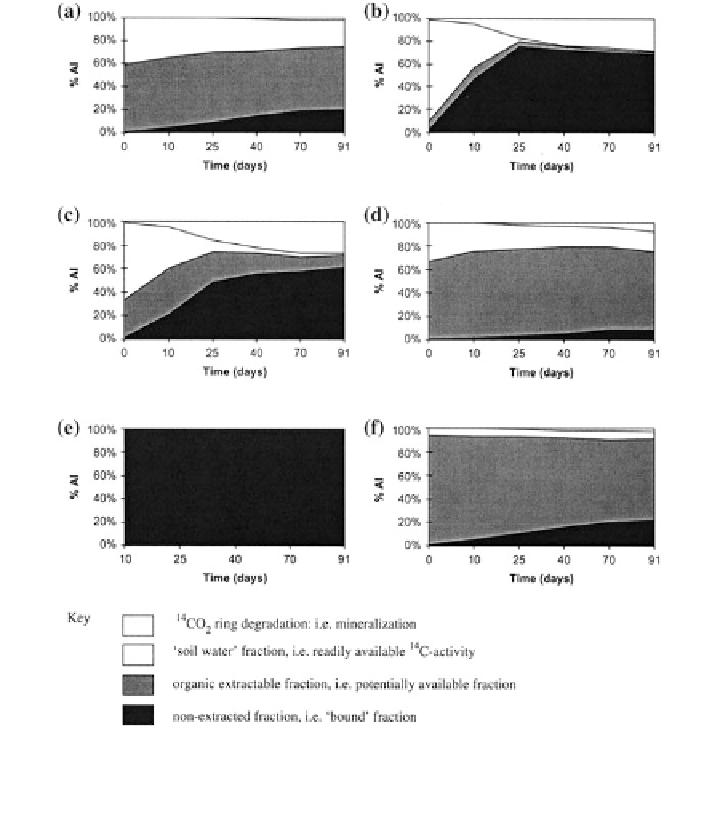Geoscience Reference
In-Depth Information
Fig. 8.51 Summary data of pesticide residues in the soil environment, showing the distribution
between mineralization and extractability: a atrazine, b dicamba, c isoproturon, d lindane,
e paraquat, and f trifluralin. Reprinted from Mordaunt et al. (
2005
). Copyright 2005 with
permission of Elsevier
Mordaunt et al. (
2005
) categorized three classes of pesticide behavior: type A
(atrazine, lindane, and trifluralin), in which ring degradation was limited as well as
the formation of nonextractable residues; type B (dicamba, isoproturon), in which
25 % of
14
C-activity was mineralized and a large portion became nonextractable
after 90 days; and type C (paraquat), in which a large portion of contaminant was
found nonextractable after 90 days. These results illustrate the effect of extraction
sequence by organic solvents on the extractable portion of contaminant from soils.
However, because the soil matrix is altered during the extraction procedure, the
data cannot be used to define the amount of pesticides remaining in soils as bound

